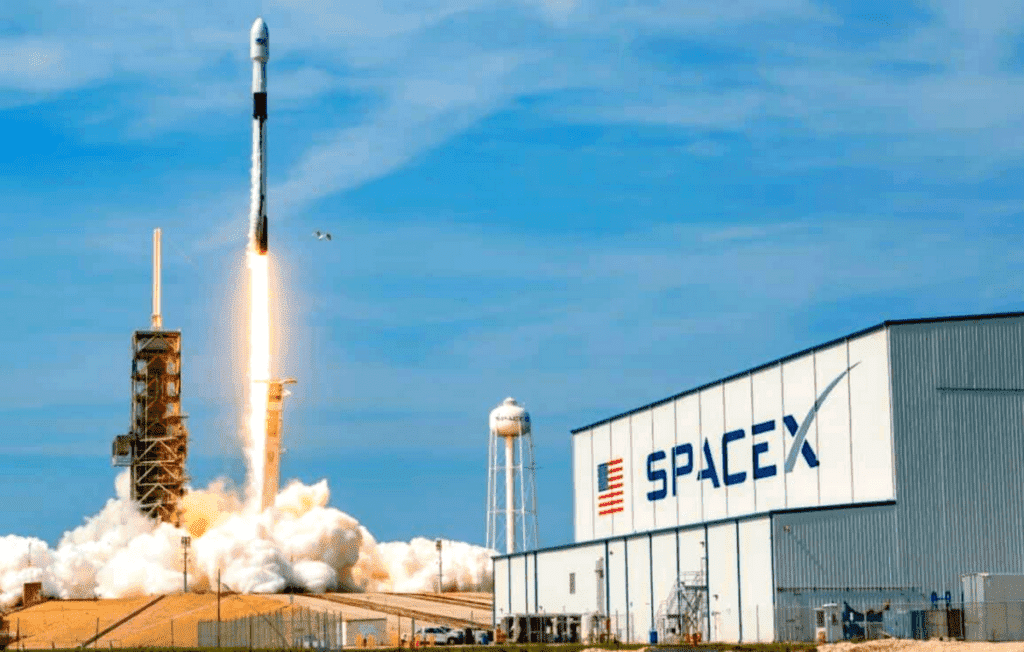At 6:11 p.m. Eastern, the Falcon 9 rocket lifted off from Space Launch Complex 40 at the Cape Canaveral Space Force Station in Florida. The Cosmo-SkyMed Second Generation (CSG 2) satellite for the Italian space agency ASI and the Italian military was launched by the rocket’s upper stage an hour after liftoff.

Eight minutes after liftoff, the rocket’s first stage landed at Cape Canaveral’s Landing Zone 1. The booster was designed as a side booster for the Falcon Heavy’s triple-core rocket and flew on the rocket’s second and third missions in 2019. It was the first time a Falcon Heavy side booster was transformed into a Falcon 9 booster.
The launch was supposed to take place on Jan. 27, but it was cancelled due to bad weather, which also delayed launch efforts for the next two days. For a fourth try on Jan. 30, the weather cooperated, but a cruise ship sailed into restricted waters off the Florida coast and was unable to get out of the way in time for the launch.
The 2,200-kilogram satellite is the second in a fleet of four satellites designed to replace the initial Cosmo-SkyMed satellites launched between 2007 and 2010. The second-generation satellites, like the first-generation satellites, provide X-band synthetic aperture radar imagery, but they can also capture photos of two places hundreds of kilometres distant at the same time.
CSG-2 was supposed to be released on a Vega C. With the first launch of that vehicle pushed back until at least May, ASI decided last autumn to switch to a Falcon 9 in the hopes of launching the spacecraft by the end of the year, a decision that alarmed several in the European space sector.
“Since Arianespace backlog was already full on Soyuz and Ariane systems in 2021, it was not possible to have a European back-up solution compliant with the CSG-2 schedule,” ASI said in a statement last fall justifying its decision to acquire a launch from SpaceX. “In line with its long-lasting support ensured to the European launch industry, ASI confirmed its trust in Arianespace and Vega C capabilities by contracting the launch of the CSG-3 satellite, planned for 2024.”
Cadence of launch is high.

After two Starlink launches on January 6 and 18, as well as the Transporter-3 rideshare mission on January 13, this is the fourth Falcon 9 mission of 2022. A Falcon 9 launch of Starlink satellites is planned for no sooner than February 1 from the Kennedy Space Center, while a Falcon 9 will launch a classified payload for the National Reconnaissance Office on February 2 from Vandenberg Space Force Base in California.
While SpaceX executives have not given a particular number of launches for this year, Sandy Magnus, a member of NASA’s Aerospace Safety Advisory Panel, stated during a meeting of the panel on Jan. 27 that the business was planned 52 launches in 2022, or one per week.
“That’s an incredible pace,” she said, but injected a note of caution. “NASA and SpaceX will have to ensure the appropriate attention and priority is focused on NASA missions and the right resources are brought to bear to maintain that pace at a safe measure.”
However, in the past, SpaceX has struggled to maintain a high launch rate. The business launched 20 satellites in the first six months of 2021, but only three in the next four months, owing to delays in the production of Starlink satellites, which make up the majority of the Falcon 9 manifest.
In the final two months of the year, SpaceX picked up the pace, launching three rockets in less than 72 hours. It had 31 launches before the end of the year, which was a new high for the company.
The availability of payloads as well as SpaceX’s ability to refurbish Falcon 9 first stages and construct new upper stages will dictate the pace. Elon Musk, the CEO of SpaceX, said in a podcast in December that his company’s current rate of refurbishment was falling short of his expectations. “Neither the booster nor the fairings are as quickly or entirely reusable as we’d like,” he said.
He also gave an estimate of the cost of a Falcon 9 launch in the same episode. “Our minimal marginal cost, not including overhead, per flight is on the range of $15–20 million,” he stated, with the upper stage accounting for the majority of that cost, which he put at $10 million.
“That’s extremely good. It’s by far better than any rocket ever in history,” he said, but that the full reusability promised by SpaceX’s next-generation Starship vehicle will significantly reduce that cost while increasing payload capacity. “Starship, in theory, could do a cost per launch of a million, two million dollars, or something like that, and put over 100 tons into orbit. This is crazy.”




